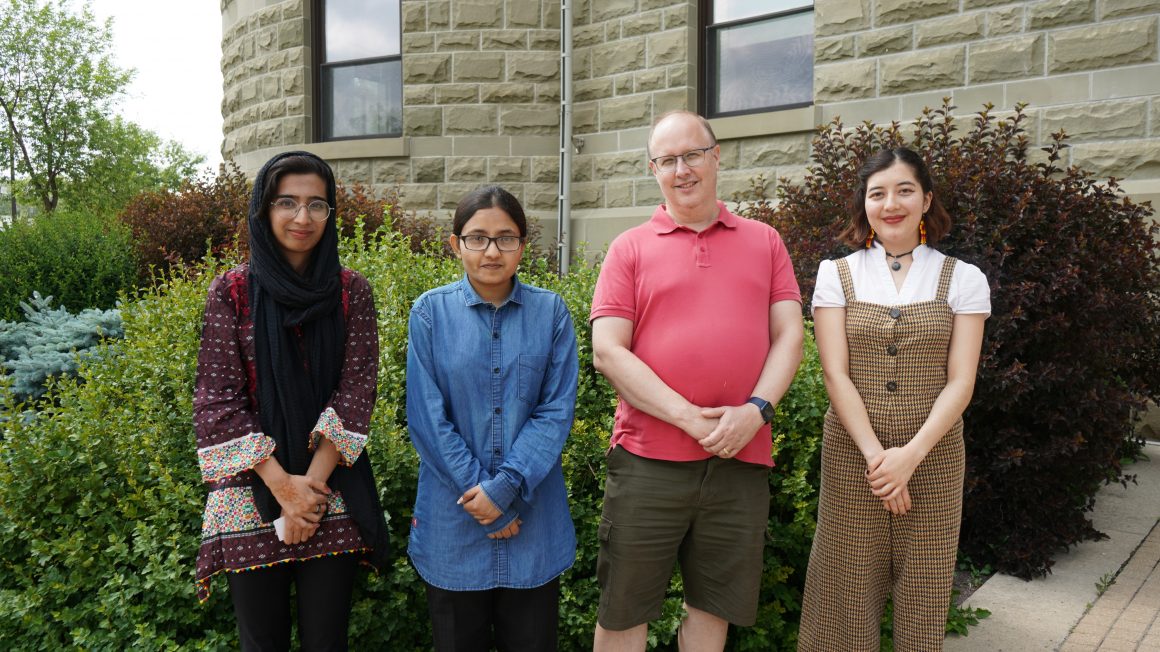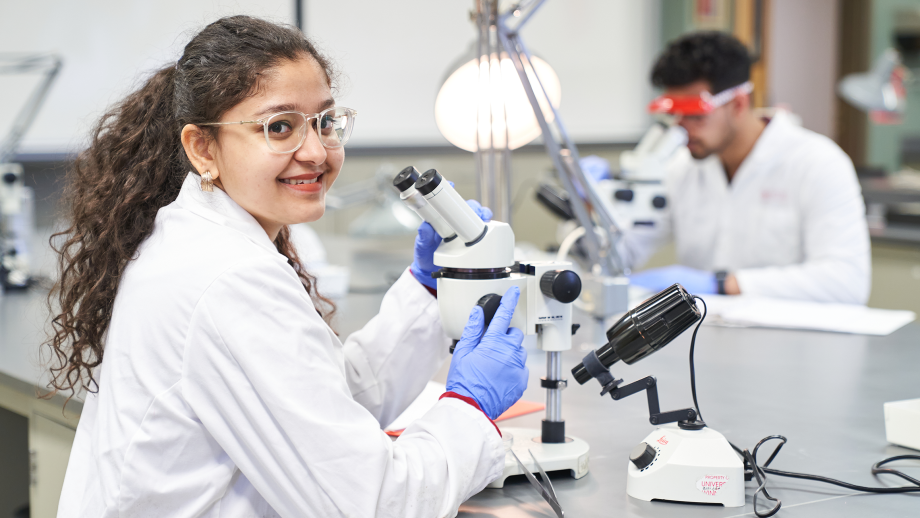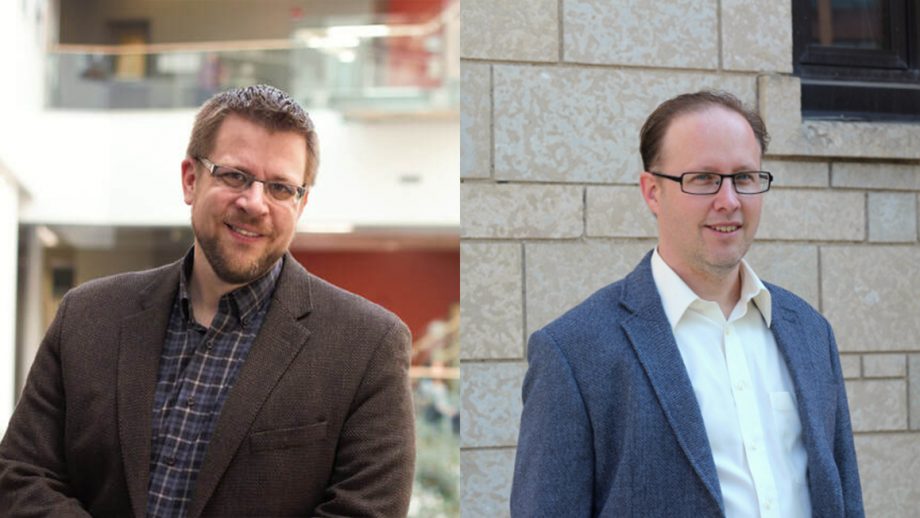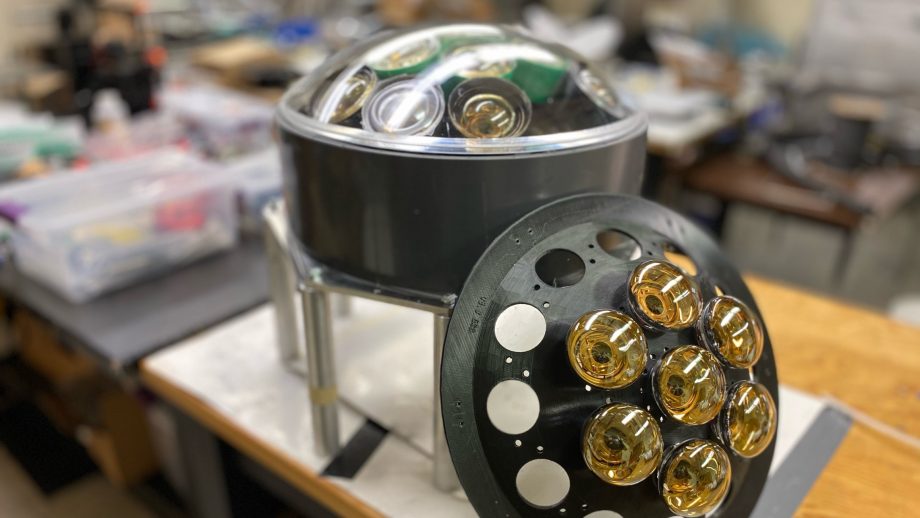University of Winnipeg physicist Dr. Blair Jamieson is the envy of The Big Bang Theory’s Dr. Sheldon Cooper, as he and his research group are heading to CERN in Switzerland this fall.
The European Organization for Nuclear Research, known as CERN, is one of the world’s largest and most respected centres for scientific research.
This valuable data collection of improved neutrino measurements will significantly contribute to the ongoing research on neutrinos that will further solidify groundbreaking scientific initiatives around the world.
Dr. Blair Jamieson
Dr. Jamieson is making waves in the scientific community, as he is at the forefront of a new development aimed at advancing the understanding of fundamental interactions and improving neutrino measurements. He’s embarking on this groundbreaking research with Faculty of Graduate Studies student Mahnoor Mansoor, who is currently at CERN, Postdoctoral Fellow Ali Ajmi, and MITACS undergraduate student Andera Mayorga, who’s from Mexico.
“This valuable data collection of improved neutrino measurements will significantly contribute to the ongoing research on neutrinos that will further solidify groundbreaking scientific initiatives around the world,” explained Dr. Jamieson.
Unraveling the mysteries of neutrinos
At CERN, Dr. Jamieson and his team will undertake critical work with immense significance. Their efforts will contribute to unraveling the mysteries surrounding neutrinos by refining measurement techniques. Building on his ongoing research in Japan as part of the Hyper-Kamiokande (Hyper-K) experiment, this endeavor marks a vital step towards achieving a more accurate measurement framework.
To achieve their goals, Dr. Jamieson, Mansoor, and collaborators from around the world are preparing for a beam test utilizing a traditional particle detector called a hodoscope. This device is specifically designed to identify different energies of gamma rays. Dr. Jamieson’s engineering expertise will play a crucial role in the success of this experiment, ensuring its accuracy and reliability as they employ a lead glass calorimeter to precisely measure the energy levels of these gamma rays.
Picture perfect
In addition, Dr. Jamieson’s team is currently preparing a set of high-resolution cameras for underwater photogrammetry of the water Cherenkov detectors at UWinnipeg. This initiative involves placing eight camera housings underwater within the water. The underwater housings and camera electronics are being prepared in Room 3L10 on campus.
Ajmi will be installing them in the water Cherenkov detector this fall. In addition, Mayorga, is studying the camera calibration to remove the distortion and understand the uncertainties in position reconstruction from the images collected underwater.
The primary objective of this ambitious undertaking is to discern the differences between neutrino and anti-neutrino oscillations, which holds immense promise in enhancing our understanding of these fundamental particles.
Dr. Jamieson’s team is making a significant contribution to the global scientific community, while also serving as a profound inspiration for the next generation of physicists, encouraging them to pursue groundbreaking research endeavors.
Just beam it!
The beam test being conducted at CERN serves as a crucial preparation phase for the Water Cherenkov Test Experiment (WCTE), which is a scaled-down version of the Intermediate Water Cherenkov Detector (IWCD) for Hyper-K. Addressing one of the key uncertainties surrounding the current generation of water Cherenkov detectors, this test will enable the distinction between gamma rays and electrons.
By utilizing CERN’s T9 beamline, known energies of muons, pions, electrons and gamma rays will be directed into the water Cherenkov detector, facilitating comprehensive analysis. Jamieson highlights the importance of the data derived from these measurements, emphasizing its potential to enhance reconstructions using both traditional and machine learning methods.
The Hyper-K detector, scheduled to commence operations in 2027, is poised to revolutionize the field of particle physics. It will enable precise measurements of neutrino and anti-neutrino oscillations, as well as the study of CP violation. Years of collaborative efforts by an international team of researchers, including Canadian institutions such as the University of Victoria, TRIUMF, BCIT, University of Regina, and Carleton University, have culminated in this exciting upcoming phase of exploration.
Even Dr. Sheldon Cooper would revel in the fascinating findings emerging from Dr. Jamieson’s research at CERN and the enthralling adventure in unraveling the mysteries surrounding neutrinos.





